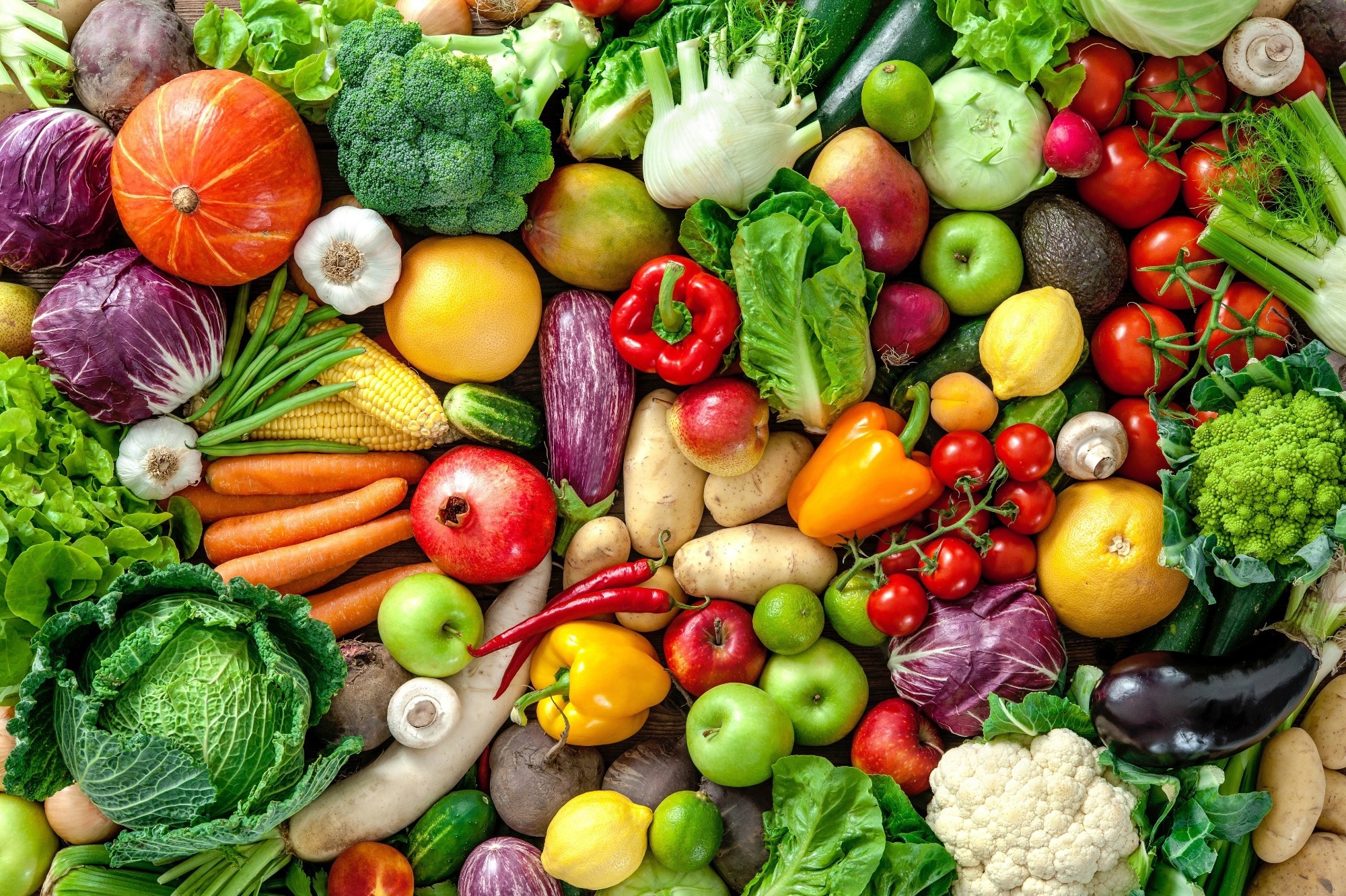In a recent study published in the Nutrients, a group of researchers evaluated the association between vegetable and fruit consumption and the risk of sarcopenia through a systematic review and meta-analysis, adhering to Preferred Reporting Items for Systematic Reviews and Meta-Analyses (PRISMA) guidelines.
Study: Association of Dietary Vegetable and Fruit Consumption with Sarcopenia: A Systematic Review and Meta-Analysis. Image Credit: creativeriver/Shutterstock.com
Background
Sarcopenia, the gradual loss of muscle mass and strength with age, affects 8-36% of adults under 60 and 10-27% of those over 60, with severe cases at 2-9% in those around 68.5 years old. It leads to disabilities, diabetes, hypertension, and increased mortality. Prevention is crucial due to its links with chronic diseases.
Contributing factors include chronic illnesses, inactivity, malnutrition, and dietary deficiencies.
Recent studies suggest that vegetables and fruits, rich in vitamin C and phytochemicals, may benefit muscle health, highlighting the need for further research to clarify their impact on sarcopenia.
About the study
In the present study, researchers searched EMBASE, MEDLINE, and the Cochrane Library databases for studies published up to July 2023, using MeSH terms and keywords related to fruit and vegetable consumption and sarcopenia. Two researchers independently evaluated study eligibility, resolving disagreements by consensus.
Inclusion criteria included observational studies assessing all three sarcopenia parameters, providing odds ratios (OR)s with 95% confidence intervals (CI)s, conducted within the general population, and published in English.
Exclusion criteria included studies assessing fewer than three sarcopenia parameters, involving only frail individuals, investigating sarcopenic obesity, multiple publications of the same data, and non-observational studies.
Data extraction included information on the first author, publication year, participant country, sarcopenia definition, body composition assessment method, baseline age, dietary assessment, vegetable and fruit consumption definition, exposure categories, ORs with 95% CIs, and adjusted variables.
The main analysis used adjusted ORs with 95% CIs to investigate the association between vegetable and fruit consumption and sarcopenia risk, comparing the highest and lowest consumption groups.
Subgroup analyses considered study design, sex, age, dietary patterns, sarcopenia definition criteria, participant geographical region, and methodological quality.
The risk of bias was assessed using the Newcastle-Ottawa Scale (NOS) for cross-sectional and cohort studies, with scores ranging from 0 to 9. Statistical analysis involved calculating pooled ORs with 95% CIs using the inverse variance-weighted mean of the logarithm of the adjusted ORs.
Heterogeneity across studies was measured using Higgins I2, with values >50% indicating substantial heterogeneity. A random-effects model was used for all analyses due to variability in study design and populations.
Publication bias was assessed using Begg’s funnel plot and Egger’s test, with asymmetry or p-value <0.05 indicating bias. All statistical analyses were performed using Stata SE version 16.
Study results
A total of 887 studies were initially identified from the database search. After excluding 215 duplicates and 574 studies that did not meet the selection criteria during title and abstract screening, 98 studies were assessed in full.
Subsequently, 84 studies were excluded for various reasons, leaving 14 studies for the final meta-analysis. These included 11 cross-sectional studies and three cohort studies, comprising 6,436 patients with sarcopenia among 33,801 participants.
The included studies were conducted in various regions: ten in Asia, two in Europe, and one in America. Participants were generally aged ≥60 years, with nine studies involving those aged ≥65 years.
Exposure was defined in terms of vegetable and fruit consumption, with some studies focusing on the Mediterranean dietary pattern.
Sarcopenia definitions varied, with the Asian Working Group for Sarcopenia (AWGS) 2014 being the most frequently used, followed by the European Working Group on Sarcopenia in Older People (EWGSOP1 and EWGSOP2) and AWGS 2019.
Methodological quality was assessed using the NOS, with scores ranging from 0 to 9. Studies scoring ≥7 were classified as high quality, while those scoring ≤6 were classified as low quality.
The mean score was 7.0 for cohort studies and 6.7 for cross-sectional studies, with half of the studies categorized as high quality.
The meta-analysis revealed that vegetable and fruit consumption was significantly associated with a reduced risk of sarcopenia (OR, 0.61; 95% CI, 0.48 to 0.79; I2 = 59.8%). Subgroup analyses by study design indicated that this association was significant in cross-sectional studies but not in cohort studies.
Publication bias was assessed using funnel plots and Egger’s test, revealing asymmetry. A sensitivity analysis excluding one study showed no publication bias, and the association’s strength remained unaffected.
Subgroup analyses by sex showed a significant association in men but not in women. Age-wise, the association was important for participants aged ≥60 years.
Dietary pattern analyses indicated that vegetable, fruit, and Mediterranean diet consumption significantly reduced sarcopenia risk.
Subgroup analyses by sarcopenia definition revealed significant associations for groups using AWGS 2014 and EWGSOP2 criteria but not for those using AWGS 2019 or EWGSOP1 criteria.
Conclusions
The results suggest that vegetable and fruit intake significantly reduces sarcopenia risk, particularly in men and those aged ≥60 years. These foods’ antioxidant nutrients and alkaline properties may help preserve muscle mass.
Differences in hormone profiles and nutritional knowledge could explain the sex-specific effects.
Despite variations in diagnostic criteria across studies, this analysis provides strong evidence that vegetable and fruit consumption benefits muscle health and reduces sarcopenia risk.








